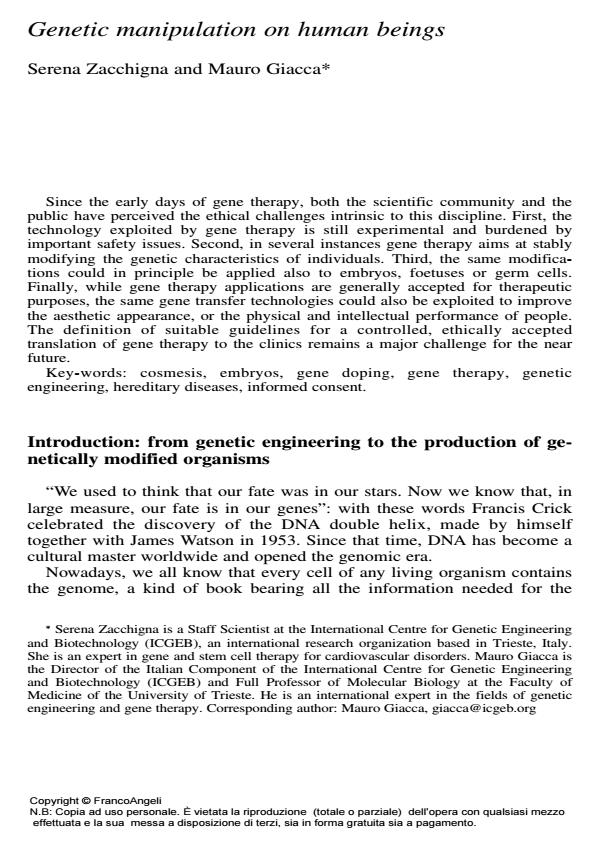Genetic manipulation on human beings
Titolo Rivista SALUTE E SOCIETÀ
Autori/Curatori Serena Zacchigna, Mauro Giacca
Anno di pubblicazione 2010 Fascicolo 2010/En3 Lingua Inglese
Numero pagine 21 P. 52-72 Dimensione file 309 KB
DOI 10.3280/SES2010-003005-ing
Il DOI è il codice a barre della proprietà intellettuale: per saperne di più
clicca qui
Qui sotto puoi vedere in anteprima la prima pagina di questo articolo.
Se questo articolo ti interessa, lo puoi acquistare (e scaricare in formato pdf) seguendo le facili indicazioni per acquistare il download credit. Acquista Download Credits per scaricare questo Articolo in formato PDF

FrancoAngeli è membro della Publishers International Linking Association, Inc (PILA)associazione indipendente e non profit per facilitare (attraverso i servizi tecnologici implementati da CrossRef.org) l’accesso degli studiosi ai contenuti digitali nelle pubblicazioni professionali e scientifiche
Since the early days of gene therapy, both the scientific community and the public have perceived the ethical challenges intrinsic to this discipline. First, the technology exploited by gene therapy is still experimental and burdened by important safety issues. Second, in several instances gene therapy aims at stably modifying the genetic characteristics of individuals. Third, the same modifications could in principle be applied also to embryos, foetuses or germ cells. Finally, while gene therapy applications are generally accepted for therapeutic purposes, the same gene transfer technologies could also be exploited to improve the aesthetic appearance, or the physical and intellectual performance of people. The definition of suitable guidelines for a controlled, ethically accepted translation of gene therapy to the clinics remains a major challenge for the near future.
Keywords:Cosmesis, embryos, gene doping, gene therapy, genetic engineering, hereditary diseases, informed consent
Serena Zacchigna, Mauro Giacca, Genetic manipulation on human beings in "SALUTE E SOCIETÀ" En3/2010, pp 52-72, DOI: 10.3280/SES2010-003005-ing